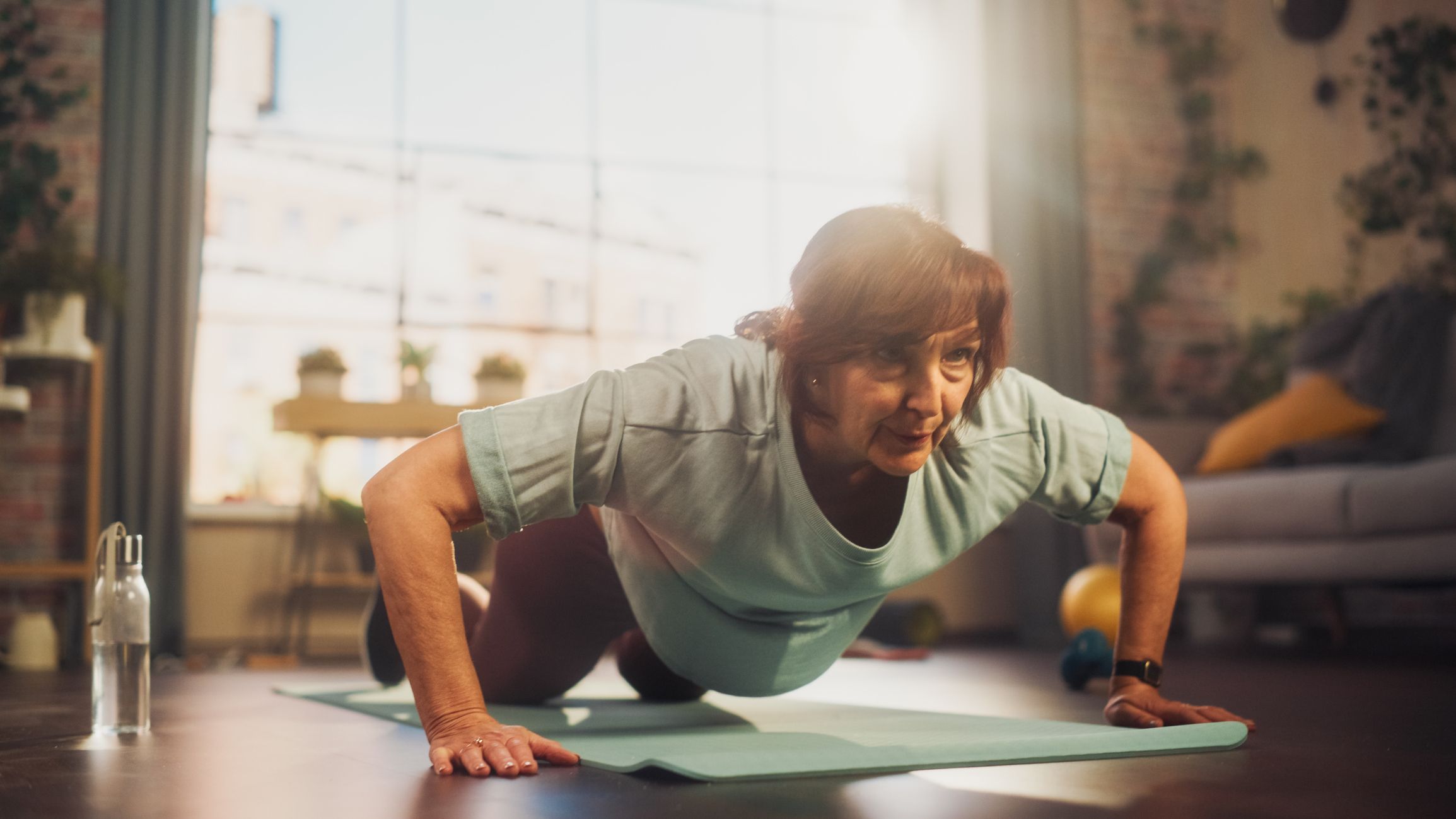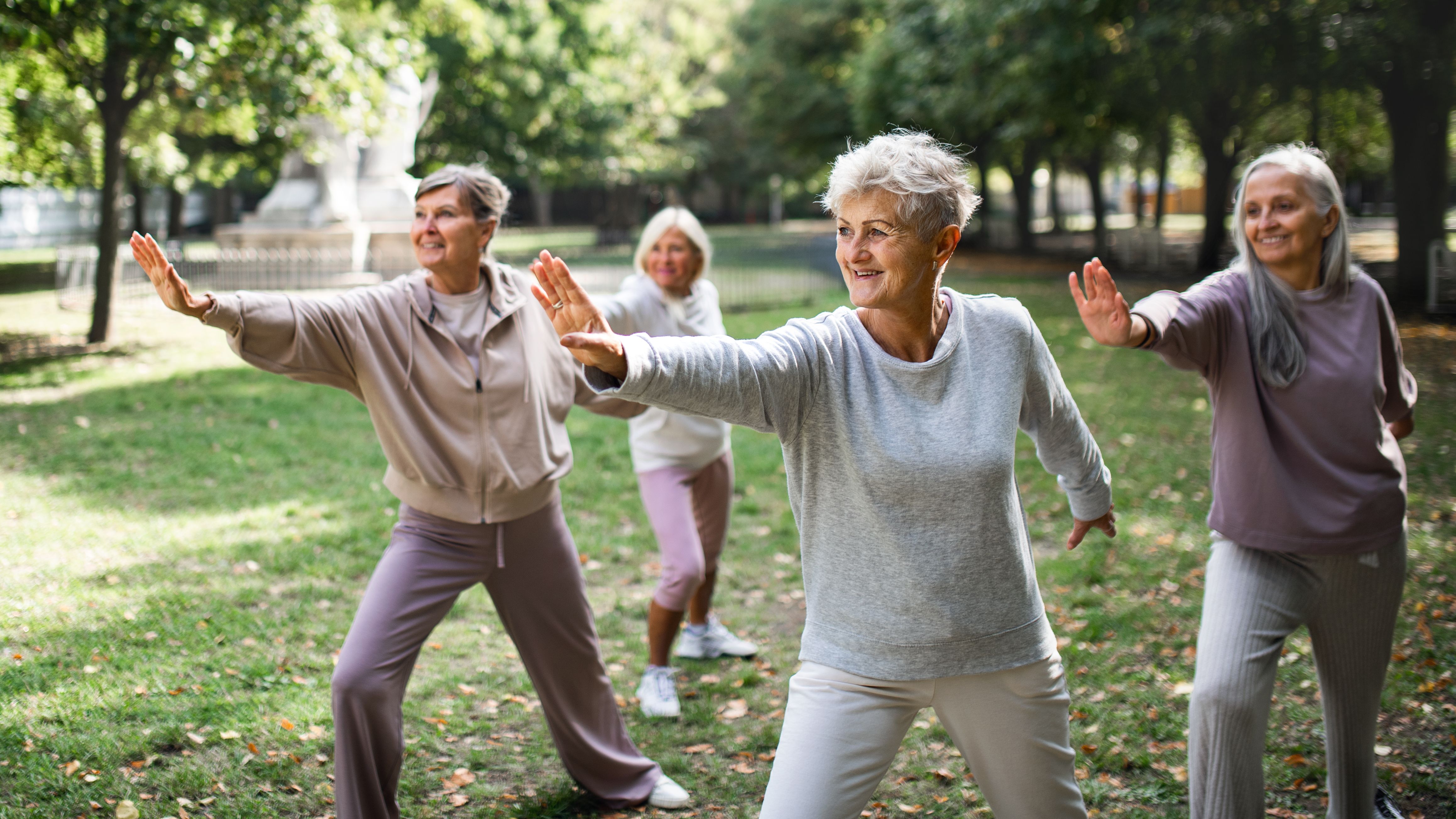Longevity is a topic we cover a lot at Fit&Well, but longevity shouldn’t just focus on adding more years to your lifespan, it should be about living a healthy life in the best condition possible.
While there’s no guarantee you can ensure your body is truly future-proof—accidents, illnesses and poor fortune can befall anyone at any age—there are some things you can do to invest in the health of your future self based around movement, nutrition and community.
Focusing purely on the movement side of longevity, I decided to speak to Dr Mohammed Enayat, a practicing medical doctor and the founder of HUM2N, a pioneering longevity clinic based in London.
Enayat shared some advice for longevity with Fit&Well, explaining some of the reasons why our bodies degrade as we age, and how we can slow that process down.
How the body slows down with age
First, he explained sarcopenia—the loss of muscle mass as we age—to me in terms of the number of burpees you can do.
“In your 20s, you might be able to do 10 burpees to maintain a certain muscle size, volume and function. Then, when you’re 50, you would probably need to do 20 burpees for the same response,” he says.
He listed how the body also slows down in other ways:
- “We stop producing as many stem cells from our bone marrow as we age and the stem cells are the precursors for tissue growth, so our ability to grow new tissue decreases.
- “The amount of our blood supply: our cardiovascular systems become less efficient over time due to cholesterol buildup in the vessels.
- “Our assimilation of protein through our digestive tract means that we don’t seem to absorb as much protein due to the degradation of the small intestinal wall. So our absorption across the small intestine into our bloodstream of those protein-building blocks means that we’re not getting as much into our blood in the first place.
- “The other problem is that in reality we use our muscles less as we get older, we’re much more active in our teens and 20s than in our 40s and 50s, so they atrophy.”
How to slow the aging process
But it’s not all doom and gloom, here are his top three movement tips for mitigating all of the above to increase your chances of living a long and healthy life.
1. Strength training

(Image credit: Getty Images / gorodenkoff)
Enayat says strength training is key to longevity. “The muscles that protect the joints, the hips particularly—so your quadriceps, hamstrings and glutes—get underused as we get older, which puts people at more risk of frailty.”
He told me that one of the main predictors of death is a fracture in the femoral neck—a crucial part of the hip joint. It’s difficult to recover from, and even if someone is active beforehand, it can speed up their decline into immobility, disability and eventually death.
You can reduce your risk of this sort of fracture by building and maintaining the hip-protecting muscles mentioned above. “It’s important to start as early as possible to preserve and strengthen those muscles and work against the natural sarcopenia,” says Enayat.
This beginner strength training routine for home is one way to start.
2. Aerobic exercise

(Image credit: Getty Images / andreswd)
It is important to maintain your cardiorespiratory muscles and you won’t get much cardiovascular benefit from your strength training, so Enayat recommends breaking a sweat from aerobic exercise twice a week.
Instead of prescribing specific exercises, as this varies depending on your fitness level, ability and preferences, Enayat breaks it down by heart rate zones, which instead, are based on how hard your heart is working.
Each zone is calculated based on your maximum heart rate and how close to this it is functioning.
Here’s a brief rundown of the most common definition of heart rate zones:
- Zone 1: 50-60% of your maximum heart rate
- Zone 2: 60-70% of your maximum heart rate
- Zone 3: 70-80% of your maximum heart rate
- Zone 4: 80-90% of your maximum heart rate
- Zone 5: 90-100% of your maximum heart rate
The great thing about defining your exertion by heart rate zone rather than simply saying “go away and do 45 minutes on the treadmill” is that your cardiovascular exertion is tailored to you.
“For some people, they might break a sweat by walking up the stairs if they’re deconditioned. For some, it might be a light jog, for some it might be a sprint,” says Enayat. Ideally, you want to be in zones two to three for 45 minutes, twice a week, as a minimum.
“Then in zone four, you want to be getting your heart rate up in shorter spells,” he adds. “That might be things like Tabata or HIIT training that you might want to do once or twice a week as well, for a minimum of five minutes.”
3. Stretching and breathwork

(Image credit: Getty Images / Halfpoint Images)
“Mobility is really important as well, but it’s of secondary importance to strength training and aerobic exercise,” explains Enayat. “You will be working on your mobility with your strength training to a degree, and as long as you’re incorporating some good stretching, plus a session of yoga if you can, then that’s fantastic.
“As you get older, tai chi is excellent as a form of exercise, because that gives you strength through controlled movements—where you’re keeping your muscles tense and working them without resistance.”
Another great benefit of tai chi and yoga is that they incorporate breathwork, which can help with the mind-body connection, stress and nervous system regulation.
Following Enayat’s advice, here’s what a week of longevity-focused movement could look like:
Longevity movement plan
- Monday: 30-45min strength training (upper body), 5-10min aerobic exercise (zone 4), 5-10min stretching
- Tuesday: 30-45min aerobic exercise (zones 2-3)
- Wednesday: 30-45min strength training (lower body), 5-10min stretching
- Thursday: Rest day with 5-10min breathwork
- Friday: 30-45min aerobic exercise (zones 2-3), 5-10min aerobic exercise (zone 4), 5-10min stretching
- Saturday: 30-45min strength training (full body), 5-10min stretching
- Sunday: Rest day with 5-10min breathwork
Note: aerobic exercise in zones 2-3 can be as simple as a brisk walk or a gentle cycle. As you get fitter, you can increase the number of zone 2-3 sessions a week to three or four.
Source link

